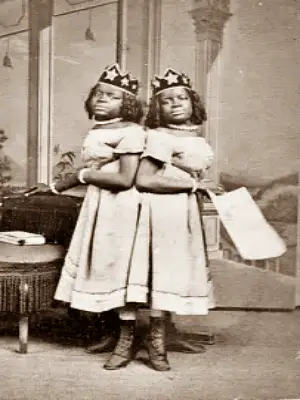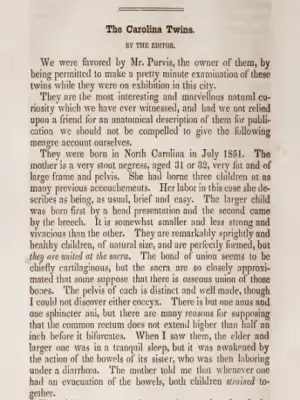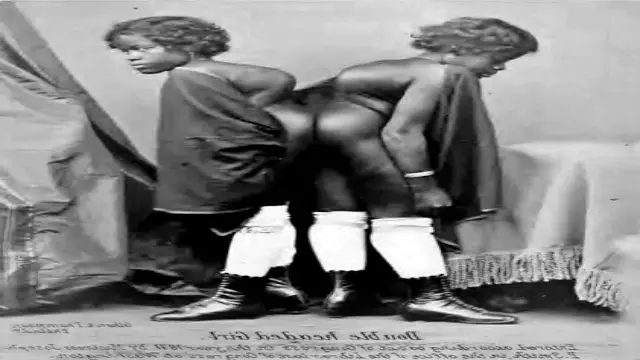Millie Christine was not just a name; it represented a unique story of two lives intertwined. Born on July 11, 1851, in Whiteville, North Carolina, Millie Christine was a pair of conjoined twins. Her mother, Monemia, named her after both girls, reflecting their inseparable bond. This name choice was not just a whim; it was a profound acknowledgment of their shared existence.
A Unique Birth
Millie Christine was born on a slave plantation owned by Alexander McCoy. Monemia was 32 years old and had already given birth to seven other children. The birth of Millie and Christine was said to be quick and uncomplicated. Christine, the larger twin, was born first, followed by Millie, who arrived breech. Together, they weighed a remarkable 17 pounds. Monemia had no explanation for their condition, and she had not seen the famous Siamese twins, Chang and Eng Bunker, who lived nearby.
Early Life and Challenges
The McCoy family treated Millie Christine well, but their lives changed dramatically when curious visitors began to overwhelm them. To escape the constant attention, the family was sold to Mr. Brower and Mr. Smith for $10,000. This marked the beginning of Millie Christine’s life as a public figure. They were taken to New Orleans, where the first medical examinations took place, and plans were made to exhibit the twins to the public.

However, the naive Brower and Smith were soon swindled by a Texan named Purvis, who initially offered them $45,000 for Millie Christine. Instead of a fair deal, he kidnapped the twins and displayed them in Barnum’s American Museum. Eventually, Purvis was tricked by a man named Professor Miller, who transported Millie Christine to Britain for public exhibitions.
A Fight for Freedom
Joseph Pearson Smith, a determined man, tracked down Millie Christine in Birmingham, where she was being exhibited. After a series of legal battles, bribes, and the intervention of the American Consul, Millie Christine was returned to her mother. The arguments about ownership were complicated, especially since slavery had been abolished in Britain in 1833.
Reunited, Millie Christine and her mother returned to the plantation. However, their troubles were not over. Miller and Thompson, the men who had kidnapped her, followed them, but their plans to re-kidnap Millie Christine were thwarted when the townspeople learned of their intentions.
Education and Performance
After returning home, Mrs. Smith took it upon herself to educate Millie Christine. She learned to read, write, sing, dance, and play multiple instruments, including the guitar and piano. Remarkably, she became fluent in five languages.

In 1860, Joseph Smith passed away, but Mrs. Smith continued to support Millie Christine and her family. After the American Civil War and the abolition of slavery, Millie Christine chose to perform publicly. She became known as The Carolina Twin and later as The Two-Headed Girl.
Rise to Fame
Millie Christine’s performances were a sensation. In just two weeks in Washington, 30,000 people came to see her. In Boston, she attracted 70,000 visitors over three weeks, and in New York, 10,000 people flocked to see her in a single day. Her talent and charm captivated audiences, and she toured extensively in Britain and Europe.
During her performances, she showcased her intelligence and grace. Millie sang contralto while Christine sang soprano, and they performed self-penned songs. They also danced various styles, including the waltz and polka. Millie Christine even had the honor of performing for Queen Victoria and her court.
Later Life and Legacy
After a successful career spanning over 35 years, Millie Christine retired to her home in North Carolina. However, tragedy struck in 1909 when a fire destroyed all her possessions, leading to significant financial loss. In 1912, Millie contracted tuberculosis, which spread to Christine. On October 8, they passed away together, just as they had lived—inseparable.
Millie Christine was classified as pygopagus conjoined twins, meaning they were joined at the sacral region. They stood about 4 feet 6 inches tall and weighed a combined 170 pounds. They wore specially made clothing that allowed them to move comfortably, and they developed a unique way of walking together.
A Poignant Reflection
Millie Christine once wrote a poignant verse that encapsulated her existence:
“I’m happy, quite, because content, For some wise purpose I was sent; My master knows what he has done, Whether I’m created two or one.”
This verse reflects the deep understanding and acceptance Millie Christine had of her unique life. She was not just a spectacle; she was a talented individual with dreams, aspirations, and a rich inner life.
Conclusion
The story of Millie Christine is one of resilience, talent, and the complexities of identity. She navigated a world that often saw her as a curiosity, yet she emerged as a celebrated performer and a symbol of strength. Her legacy continues to inspire discussions about individuality, humanity, and the bonds that connect us all. Millie Christine’s life reminds us that every person has a story worth telling, no matter how unique or unconventional it may be.

